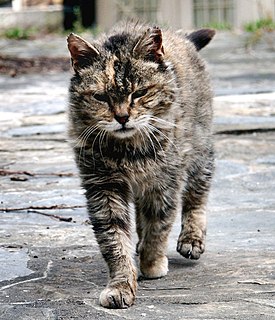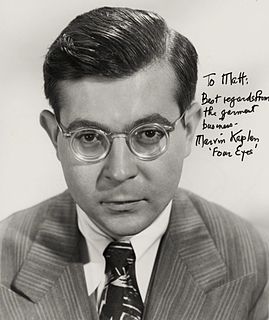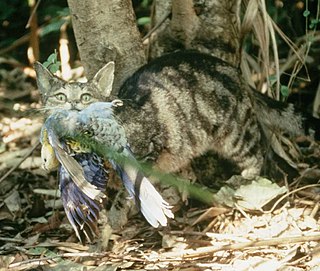
Rats are various medium-sized, long-tailed rodents. Species of rats are found throughout the order Rodentia, but stereotypical rats are found in the genus Rattus. Other rat genera include Neotoma, Bandicota and Dipodomys.

The brown rat, also known as the common rat, street rat, sewer rat, Hanover rat, Norway rat, Norwegian rat, Parisian rat, water rat or wharf rat, is one of the best known and most common rats.

Anacapa Island is a small volcanic island located about 11 miles (18 km) off the coast of Port Hueneme, California, in Ventura County. The island is composed of a series of narrow islets 6 mi (10 km) long, oriented generally east-west and 5 mi (8 km) east of Santa Cruz Island. The three main islets, East, Middle and West Anacapa, are collectively known as The Anacapas by some authors. All three islets have precipitous cliffs, dropping off steeply into the sea.

The coypu, also known as the nutria, is a large, herbivorous, semiaquatic rodent. Classified for a long time as the only member of the family Myocastoridae, Myocastor is actually nested within Echimyidae, the family of the spiny rats. The coypu lives in burrows alongside stretches of water, and feeds on river plant stems. Originally native to subtropical and temperate South America, it has since been introduced to North America, Europe, Asia, and Africa, primarily by fur farmers. Although it is still valued for its fur in some regions, its destructive feeding and burrowing behaviours make this invasive species's endurance controversial to human occupants throughout most of its range.
Trap–neuter–return (TNR) is a type of program through which free-roaming cats are trapped, spayed and neutered, then returned to the outdoor locations where they were found. If those locations are deemed unsafe or otherwise inappropriate, the cats may be relocated. Kittens young enough to be socialized and friendly adult cats may be placed in shelters or foster care for eventual adoption into homes as companion animals rather than returned to the outdoors. Cats found suffering with terminal, contagious, or untreatable illnesses or injuries are often euthanized.

A feral cat is a freely ranging wild-living domestic cat that avoids human contact: it does not allow itself to be handled or touched, and usually remains hidden from humans. Some feral cats may become more comfortable with people who regularly feed them, but even with long-term attempts at socialization they usually remain fearful.

Rodenticides, colloquially rat poison, are typically non-specific pest control chemicals made and sold for the purpose of killing rodents.

Sodium fluoroacetate is the organofluorine chemical compound with the formula FCH2CO2Na. This colourless salt has a taste similar to that of sodium chloride and is used as a metabolic poison. Potassium fluoroacetate occurs naturally as an anti-herbivore metabolite in various plants, but can also be produced synthetically. It is a derivative of fluoroacetic acid, a carboxylic acid. The more common fluorinated acetic acid (trifluoroacetic acid) and its derivatives are far less toxic.
The ecological restoration of islands, or island restoration, is the application of the principles of ecological restoration to islands and island groups. Islands, due to their isolation, are home to many of the world's endemic species, as well as important breeding grounds for seabirds and some marine mammals. Their ecosystems are also very vulnerable to human disturbance and particularly to introduced species, due to their small size. Island groups such as New Zealand and Hawaii have undergone substantial extinctions and losses of habitat. Since the 1950s several organisations and government agencies around the world have worked to restore islands to their original states; New Zealand has used them to hold natural populations of species that would otherwise be unable to survive in the wild. The principal components of island restoration are the removal of introduced species and the reintroduction of native species.

The farm cat, also known as a barn cat, is a domestic cat, usually of mixed breed, that lives primarily out-of-doors, in a feral or semi-feral condition on agricultural properties, usually sheltering in outbuildings. They eat assorted vermin such as rodents and other small animals that live in or around outbuildings and farm fields. The need for the farm cat may have been the original reason cats were domesticated, to keep rodents from consuming or contaminating grain crops stored for later human consumption. They are still commonly kept for their effectiveness at controlling undesired vermin found on farms and ranches, which would otherwise eat or contaminate crops, especially grain or feed stocks. Farm cats hunt the initial rodent population, and pheromones keep further rodents from filling the void.

Marvin Wilbur Kaplan was an American actor, screenwriter and playwright.

The Crocodile Lake National Wildlife Refuge is part of the United States National Wildlife Refuge System, located in north Key Largo, less than 40 miles (60 km) south of Miami off SR 905. The 6,686 acre (27.1 km2) refuge opened during the year of 1980, under the Land and Water Conservation Fund Act of 1965 and the Endangered Species Act of 1973. It was established in order to protect critical breeding and nesting habitat for the threatened American crocodile and other wildlife. This area also includes 650 acres (2.6 km2) of open water in and around the refuge. In addition to being one of only three breeding populations of the American crocodile, the refuge is home to tropical hardwood hammock, mangrove forest, and salt marsh. It is administered as part of the National Key Deer Refuge which is also located in the Florida Keys.
Best Friends Animal Society, founded in its present form in 1993, is an American nonprofit 501(c)(3) animal welfare organization. The group does outreach nationwide with shelters, rescue groups and members to promote pet adoption, no-kill animal rescue, and spay-and-neuter practices.

α-Naphthylthiourea (ANTU) is an organosulfur compound with the formula C10H7NHC(S)NH2. This a white, crystalline powder although commercial samples may be off-white. It is used as a rodenticide and as such is fairly toxic. Naphthylthiourea is available as 10% active baits in suitable protein- or carbohydrate-rich materials and as a 20% tracking powder.

Rats in New York City are widespread, as they are in many densely populated areas. For a long time, the number of rats in New York City was unknown, and a common urban legend declared there were up to five times as many rats as people. In 2014, however, scientists more accurately measured the entire city's rat population to be approximately only 24% of the number of humans. That would reduce the urban legend's ratio considerably, with approximately 2 million rats to New York's 8.4 million people at the time of the study.

Seabirds include some of the most threatened taxa anywhere in the world. For example, of extant albatross species, 82% are listed as threatened, endangered, or critically endangered by the International Union for Conservation of Nature. The two leading threats to seabirds are accidental bycatch by commercial fishing operations and introduced mammals on their breeding islands. Mammals are typically brought to remote islands by humans either accidentally as stowaways on ships, or deliberately for hunting, ranching, or biological control of previously introduced species. Introduced mammals have a multitude of negative effects on seabirds including direct and indirect effects. Direct effects include predation and disruption of breeding activities, and indirect effects include habitat transformation due to overgrazing and major shifts in nutrient cycling due to a halting of nutrient subsidies from seabird excrement. There are other invasive species on islands that wreak havoc on native bird populations, but mammals are by far the most commonly introduced species to islands and the most detrimental to breeding seabirds. Despite efforts to remove introduced mammals from these remote islands, invasive mammals are still present on roughly 80% of islands worldwide.
The Paw Project is a 2013 documentary film that focuses on the declawing of both exotic and domesticated cats in the United States. The film follows the crusade of veterinarian Dr. Jennifer Conrad, who campaigns to have declawing bans enacted in a number of cities. The Paw Project is also the name of the nonprofit organization founded by Conrad over the course of the film.

Cats hunt small prey, and both feral and domesticated cats prey on wildlife. This is sometimes seen as a desirable phenomenon, such as in the case of barn cats and other cats kept for the purposes of pest control. As an invasive species and superpredator, they do considerable ecological damage. In Australia, hunting by cats helped to drive at least 20 native mammals to extinction, and continues to threaten at least 124 more. Their introduction has caused the extinction of at least 33 endemic species on islands throughout the world. Feral and domestic cats kill billions of birds in the United States every year, where songbird populations continue to decline.
A working cat is type of domestic cat that "works" for its upkeep by hunting vermin, such as rodents. They are commonly employed where pest control is needed: in barns, farms, factories, warehouses, stores, churchyards, and private property. A benefit of using a working cat is that they alleviate the need for harmful pesticides. Working cats are often placed in their environment as a part of a working cats program.















